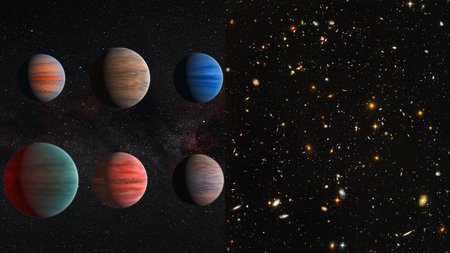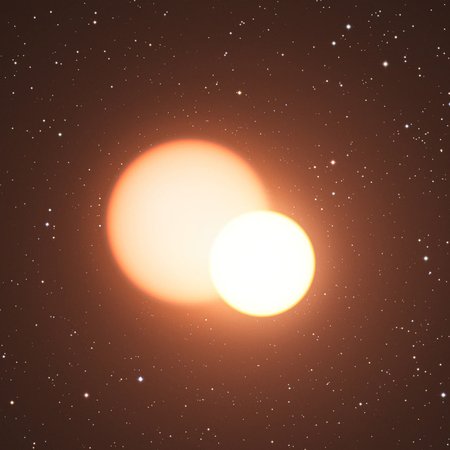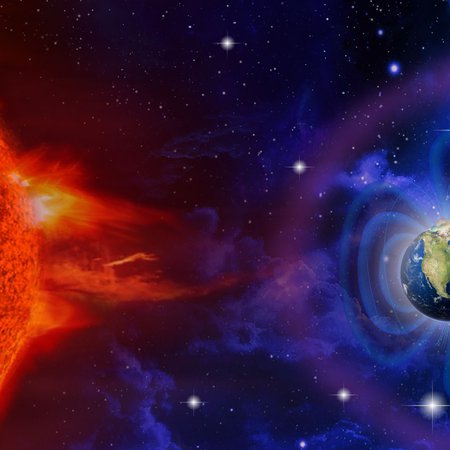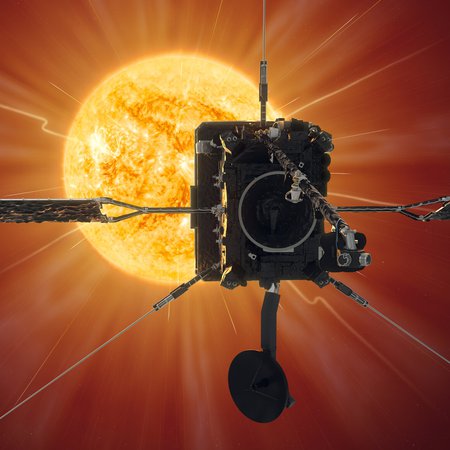Virtual Girls' Day/Future Day Brandenburg 2022
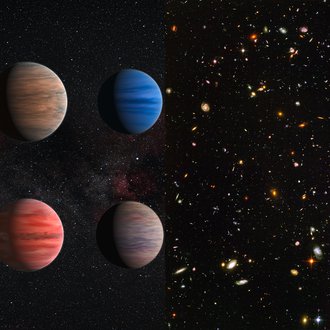
Artists's impression of exoplanets (left) and the Hubble Ultra Deep Field (right).
Credit: Left: ESA/Hubble & NASA; right: NASA, ESA, and S. Beckwith (STScI) and the HUDF TeamOn 28 April, 2022, the Girls' Day/Future Day Brandenburg will take place once again. On this nationwide day of action, female students from the 5th grade onwards have the opportunity to gain insight into occupational fields in which women are underrepresented. The Leibniz Institute for Astrophysics Potsdam (AIP) opens its doors, again virtually, on this day.
The girls, aged between 12 and 16, learn about the everyday work of an astrophysicist and find out more about working at a research institute in an online conference. AIP scientists talk about their career path and explain how scientists work. Afterwards, they answer the questions of the schoolgirls. The participants also learn more about how exoplanets are discovered, do their own research on the special features of already known planets and learn exciting details about the famous Hubble Deep Fields and the contribution of the AIP instrument MUSE.
The event, which is limited to thirty participants in total, was fully booked after a short time.
Programme
09.00 – 09.45 am
Welcome & Introduction (Dr Janine Fohlmeister, Dr Kristin Riebe, Sarah Hönig)
09.45 – 09.50 am
Break
09.50 – 10.15 am
How do I find an exoplanet? (Laura Ketzer)
10.15 – 11.00 am
Exoplanet-challenge in groups
11.00 – 11.10 am
Break
11.10 – 11.30 am
From school to astrophysics (Laura Ketzer)
11.30 – 12.10 pm
The Hubble Deep Fields (Dr Tanya Urrutia)
12.10 – 12.15 pm
Break
12.15 – 1.00 pm
Joint Escape Game in groups
How do I find an exoplanet? & From school to astrophysics (Laura Ketzer)
Over 5,000 exoplanets are known to date – and more are being discovered all the time. But how do researchers actually find planets in other, distant solar systems? AIP PhD student Laura Ketzer explains the transit method and shows step by step how an astrophysicist uses it to find a planet. Afterwards, an exciting challenge awaits the participants, in which they work in teams on already known exoplanets. Afterwards, they will learn how the path from school to the field of astrophysics can look like.
The Hubble Deep Fields (Dr Tanya Urrutia)
The famous Hubble Deep Fields are deep peeks into a supposedly "empty" point of the sky that have changed our understanding of galaxy evolution. Thousands of distant galaxies appear in images taken by the Hubble Space Telescope over an extremely long exposure time. AIP Scientist Tanya Urrutia reports on the first Hubble observations of galaxies and what the MUSE instrument developed at AIP discovered in the so-called Hubble Ultra Deep Field.
Images
Artists's impression of exoplanets (left) and the Hubble Ultra Deep Field (right).
Big screen size [1000 x 562, 110 KB]
Original size [1920 x 1080, 410 KB]
